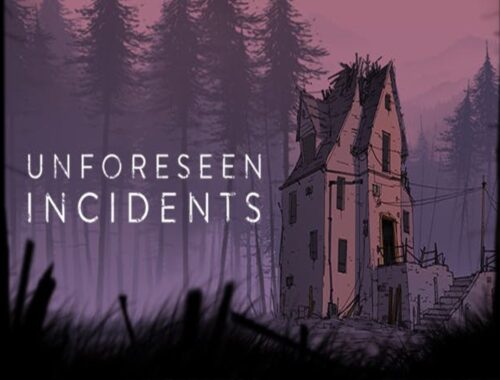Dull Grey Review
Fast Facts
Dull Grey
Developer: Provodnik Games
Publisher: Sometimes You
Website: https://provodnikgames.com/#dull_grey
Genre(s): Adventure, Visual Novel
Platform: PlayStation 4 (also available on Xbox One, Nintendo Switch and Steam)
Age Rating: PEGI 3
Release Date: 05/05/2021
Price: £3.99
A code was provided for review purposes
Dull Grey is an award-winning visual novel from Provodnik Games which was originally written in Russian by Roman Vlasov. Let’s get straight to it; was this game a ray of sunshine in my review pile, or was it a cloudy day as the title suggests? Find out below in my Rapid Review.
A False Start
Dull Grey is set in a dystopian future where something called the Progress-program seems to dictate your choice of profession as an adult. The events of the game centre on the choice that Kir (the main character) must make between becoming a lamplighter or a tallyman. His exact age is not given but as the story begins it appears that he is about to enter what is considered adulthood in the Progress-program universe.

My initial impressions of Dull Grey were not overly positive. Neither the writing style nor the plot drew me in immediately. The sound effects grated on me, and I felt that the mundane events described weren’t brought to life in any way – they felt quite flat and one dimensional. The stark art style used for the images compounded this idea, leaving me with an overall impression of a bleak and desolate landscape full of human automatons.
However, after I completed my first playthrough I began to wonder if this wasn’t all part of the effect that the game was trying to create. Each successive playthrough improved my opinion further as more story was revealed by obtaining different endings. I think that Dull Grey is a game designed to make you think and question perspectives on ideas. If this was one of its objectives, it certainly did get me thinking.
What Have You Chosen?

Interaction from the player comes in the form of selecting a response to a question. Throughout the game, you are repeatedly asked what profession you have chosen. It seems at first as if there are only two options – lamplighter or tallyman – but the more eagle-eyed amongst us will have noticed that there are trophies for selecting a wider variety of jobs. How to find these though? That is the question indeed – and also, in my opinion, the purpose of playing. From my perspective, you get the most out of Dull Grey by discovering how to find all of the endings. It’s also a fairly easy platinum for those who hunt trophies.
When I mentioned the sound effects earlier it was to say that they initially grated on me. They are made up of industrial noises (like the scraping of metal on metal) which give the impression of events onscreen taking place, short musical bursts and occasional ambient weather sounds. They convey a feeling of discordance and conjure images of a utilitarian lifestyle. Whilst I found them annoying in the beginning, the more I played, the more the noises made sense and I realised that they were an integral part of the experience.

A Contrast
After I had played through a couple of times, I found myself noticing a contrast between parts of the writing. In some bits, I found the style sparse, simple and often very matter of fact. At times it felt like reading a list of things that had happened rather than a story. Perhaps something was lost in translation in these parts, or perhaps this is a flavour of Russian culture coming through in the writing? Alternatively, was this done to hammer home the humdrum nature of lives under the Progress-program? Perhaps even a mixture of all three.
This style contrasted with parts where I felt the writing had an emotive impact. Here, the approach felt more descriptive, as if it had more depth and capacity to connect with players. These sections are in the minority throughout Dull Grey, which perhaps serves to make them even more powerful. I think that this economy of moving language in the main stage of the game also contributes towards emotion in the endings. Especially as you begin to get an inkling of the deeper message that the creators are trying to convey.

A Specific Audience
Dull Grey is a game that grew on me. I think that it will appeal to fans of the visual novel genre and particularly those who enjoy uncovering a message behind a story. Those undeterred by a slow-burning plot will also find something here. One of this game’s main charms is the overall mood that it creates for its fictional world of the Progress-program. For this reason, dystopian fiction fans may also find this title engaging. However, I think it’s unlikely to attract newcomers to the genre or players who prefer a more interactive gaming experience – it’s a game cultivated for particular tastes.
Rapid Reviews Rating

3 out of 5
3
You can buy Dull Grey in the PlayStation Store.

You can find and read our reviews on OpenCritic.





